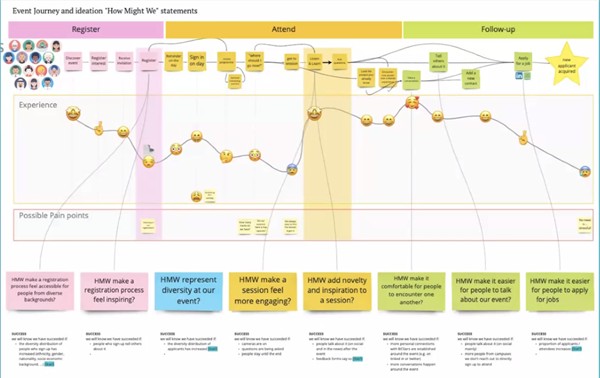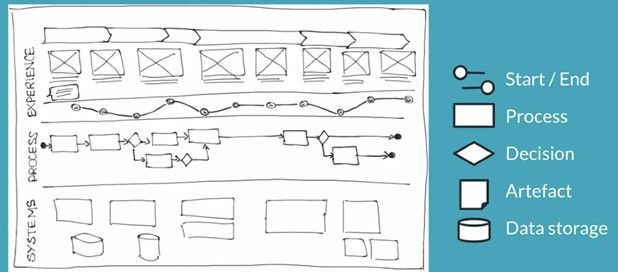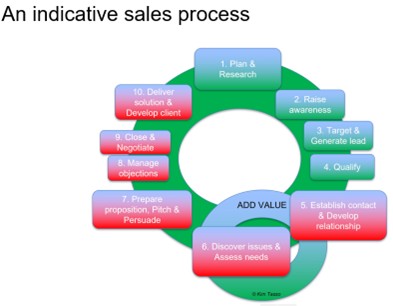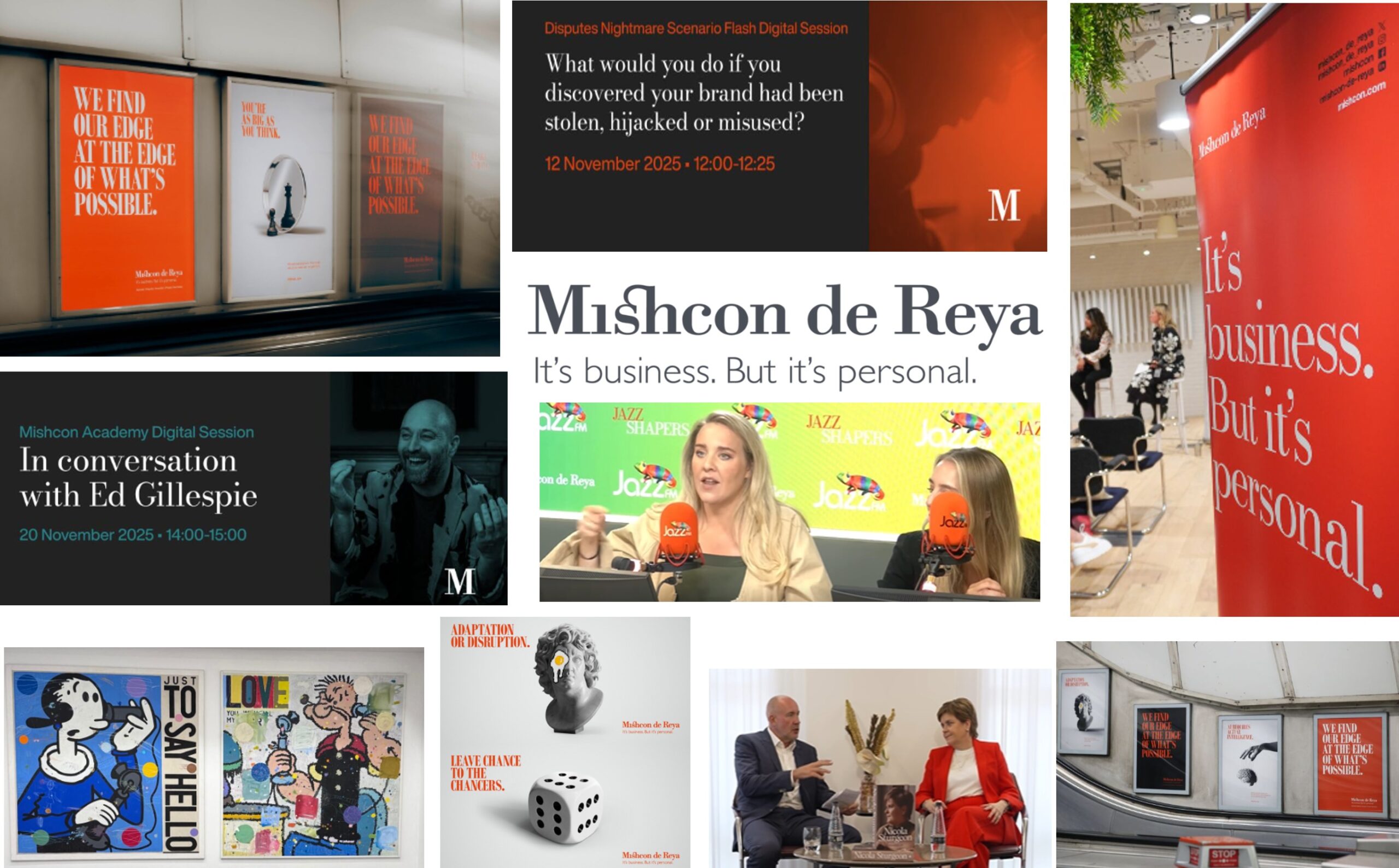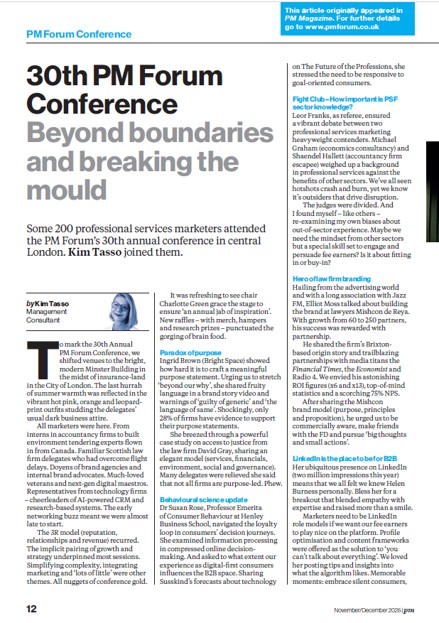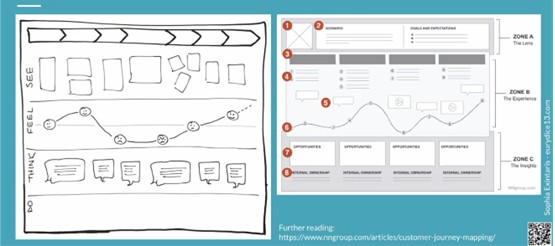
PM Forum presented a webinar in July on “Mapping the client journey”. Although client journey mapping is a fundamental tool of most client experience management (CEM) programmes it was noted that only a handful of firms have embedded the process. Bertie Heppel of London and South East – PM Forum introduced Eurydice Sophia Exintaris | LinkedIn – a consultant specialising in user experience, service blueprinting and innovation. She works at Numa Collective | independent former McKinsey/BCG/Bain strategy consultants at the intersection of strategy & tech. Mapping can be transformative in driving strategic change by revealing hidden pain points, guiding digital transformation and unlocking excellence in client experience (CX). Mapping the client journey in professional services.
Drive digital transformation
Eurydice conducted a series of polls throughout the session. Most of those attending were involved in marketing and business development for law firms although there were a few from leadership roles and others in marketing in accountancy, surveying and construction firms.
She mentioned that over 70% of digital transformation projects fail. Mainly as traditional innovation models don’t impact complexity at the core – over 50% fail due to intracompany silos. Transformation needs to be directed in the service of people – and the human factors are the main reasons for failure.
Why use client journey mapping?
Journey mapping appealed to her because “I prefer drawing to talking, drawing is faster, and leaves less room for lies” (LeCorbusier, Architect).
She noted that design-centric companies outperformed the S&P 500 by 211%.
With a client journey map everyone is looking at the same thing, there’s reduced cognitive load and the focus is human centric. You also gain insights across the entire client journey and all the teams that provide service throughout. The map reveals issues and opportunities and prompts conversations.
She described a one day service blueprinting workshop that launched six months of work. And unlocked 4 million Euros of value for a client over two years.
What is a client journey map?
A client journey map explores how you make clients feel at each step of the journey (e.g. anxiety, confusion, frustration, support, surprised, delight etc).
A typical journey – from starting to goal completion with process and technology (channel agnostic) – might cover:
- Need
- Research
- Find
- Support
- Buy
- Deliver/install
- Use
- Pay
Each journey has steps: the Hero’s experience (see, feel, think, do) and insights. A client relationship might involve multiple journeys such as purchasing a policy, making a claim and renewing a policy.
She provided an example of an event journey covering registration, attendance and follow up. This would be valuable to those in event management to improve and differentiate the service experience.
She explained that journeys can be supported by evidence that can be quantitative and qualitative data such as:
- Analytics from web traffic
- Customer satisfaction survey results
- Timings and delays in process
- Interview notes
- Observations of behaviour in context
- Social sentiment (from social media)
- Reviews (Amazon, Glassdoor, Trustpilot, app store etc)
- Expert evaluation
She commented on good interviewing techniques – how to avoid closed and leading questions that taint research. Why are questions so important? (Questioning skills). I liked her suggestion of tailgate questions – repeating the client’s last words – to obtain more details about the experience.
I liked her suggestion that you spend a few minutes at the start of the meeting encouraging attendees to write thoughts on what’s working or not working in the process. The collective view may guide where to focus in the mapping sessions.
There was an explanation of how to convert a journey map (which can be as simple or complex as you need it to be – and use Post-It notes on a wall) into a service blueprint. This involves looking at the experience and exploring the backstage process and systems. Using flow chart techniques adopted by systems analysts.
How to use a client journey map
She explained that to explore and build one journey required a dedicated and empowered team that is multi-disciplinary and self-sufficient. So it is effective in promoting a one-firm, client-centred approach and overcoming silos.
Once the map is produced, the team:
- Identifies the pain points using evidence
- Prioritises which to consider in more depth using DVF analysis
- Desirability for humans (will they choose it over an equivalent?)
- Viability for the business (is it worth the investment?)
- Feasibility (can we build it?)
- Conducts a root cause analysis (using the Five Whys Complete Guide to the 5 Whys Exercise | Atlassian)
- Defines the real problem
- Prioritises problems and move to innovation sprints
PM Forum members can access a recording of the webinar here Mapping the Client Journey in Professional Services
My reflections on client journey mapping
10 years ago I presented at a LawSouth event on the psychology of client experience management (CEM) Psychology, neuroscience and client engagement. At that event Tim Aspinall presented on value-driven client experience and Rupert Merson presented on managing performance for service delivery and growth. Achieving extraordinary client engagement – Law South 2015
The year after I was wowed by a presentation by Paul English of Grant Thornton who shared the firm’s client lifecycle model (start up, survival, lifestyle, growth and hyper-growth) against the various issues they face at each stage. And how this links to the client experience (awareness and client interest, qualify and select a provider, service delivery, post-service relationship). Client Experience Management (CEM) in professional service firms
I also reflected on my experiences of client journey mapping. And particularly working with a French colleague – many decades ago – on service blueprinting. A key insight for me was using journey mapping to make the service experience more tangible and valuable.
You need clear objectives for client journey mapping
There can be different objectives for a client journey mapping project (which is usually part of another strategic project) such as:
- Improve service experience overall
- Become more client-centric and promote cross-firm collaboration
- Overcome known experience shortfalls
- Identify where clients perceive particular value
- Differentiate the firm’s brand experience (develop value propositions)
- Identify how to automate processes
- Explore potential new products and service innovation
Clarity of objectives (and potential returns) will be important to secure the buy-in of the leadership team and the time investment of those involved.
Objectives will also define the scope of the exercise – which notoriously can become complicated and involve detailed analyses of systems and infrastructure. For example, a recent journey mapping report for one of my clients had modest aims to document business processes and sustain data integrity and compliance. The business process reengineering (BPR) client journey mapping exercise ran to 95 pages covering almost 30 journeys for various client groups and processes.
Objectives may also reassure people that the exercise is not designed to find fault with people or teams – but to understand current processes and explore how they might be enhanced.
Focus is needed in complex organisations for client journey mapping
Another observation is that professional service firms are very complex organisations. Some cover both consumer and commercial clients – and those journeys, by definition, will be different. Some are transaction-oriented and others are more relationship-based.
Firms use automation differently – so the balance of online and in person behaviour may vary significantly. There will also be many different client journeys to consider – sometimes there might be several divisions and each division might offer hundreds of different services.
Use specialist consultants for client journey mapping
I have, on occasion, used specialist consultants to assist in the process. They bring objectivity (less hampered by legacy thinking) and are experienced in the tools. They are often better equipped to interpret what the maps reveal and are therefore able to identify suitable projects. They will also be more familiar with what solutions may work when you encounter challenges as projects progress.
At a recent CIM webinar (13th August), AI Agents were used to explore customer journeys on web sites.
Related posts on client journey mapping and client experience
Planning Digital Marketing Campaigns and Content Strategy November 2024
International Marketing Benchmark 2024 from Meridian West February 2024
Future Marketing Manager – New product development March 2024
28th PM Forum Conference: Organisational culture, mentoring November 2023
Telephone skills for lawyers and accountants April 2023
Strategies for developing a private client practice – Business development September 2021
Managing client complaints – Process, anger and apologies June 2021
Innovation in Marketing August 2020
Managing Partners’ Forum Awards 2020 – Marketing, client service March 2020
Client Experience Management (CEM) – Nine takeaways June 2019
Enquiry management: Converting more telephone enquiries June 2019
Malcolm McDonald on value propositions – How to develop them May 2019
Client Experience Management (CEM) – Research into the client journey July 2018
Intapp integrates technology and information May 2018
Why Client Experience Management CEM is all the rage… July 2017
Differentiation strategies and innovation June 2017
Client Experience Management CEM Two research reports April 2017
Client Experience Management CEM April 2017
Book review of Analytical Marketer by Adele Sweetwood January 2017
Client Experience Management (CEM) in professional service firms November 2016
Integrated marketing – Sector, KAM and CEM August 2016
Client service insights – empathy and measurement July 2016
Managing client service in surveying and property partnerships – Kim Tasso June 2016
Achieving extraordinary client engagement – Law South 2015 May 2015
Book review – How to think strategically by Sola and Couturier August 2014


